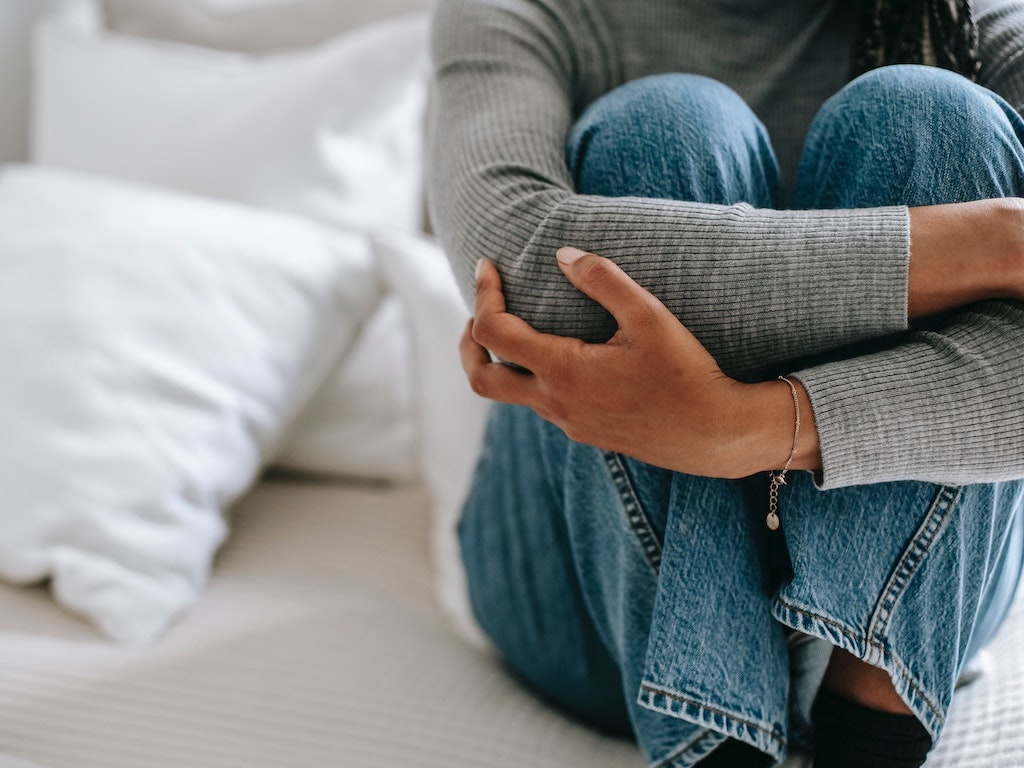SingaporeMotherhood | Lifestyle
February 2022
After almost 10 years of painful intercourse, this mum-of-two learnt she had PeVD

Three to four months after giving birth to her first child, Mary* (*not her real name) and her husband had sex. To her shock, the advertising specialist felt “a burning pain” upon penetration. In the days that came, the 37-year-old experienced discomfort “not unlike menstrual cramps”. More unpleasantness followed. “If I carried heavy things for long periods of time, I would have pelvic and lower back pain. Even passing motion led to aches,” the Croatian mum of two, who has been living in Singapore for nine years, shares.
Thinking that her body was still recovering from giving birth, Mary popped painkillers. When that did not help, she consulted a gynaecologist who conducted a pap smear and prescribed vaginal suppositories. The gynaecologist believed Mary’s symptoms were because of vaginismus, a condition where the vaginal muscles involuntarily contract.
When the suppositories did not help, Mary turned to yet another doctor, a uro-gynaecologist who treated her with intravaginal electroshock therapy. “This was a terrible experience,” Mary recounts. To make matters worse, it failed to solve the problem. The doctor then recommended expensive injections which Mary says she “did not feel safe to proceed with”.
Stress, and expense, but no solution to painful sex
“In addition to being exhausted from being a new mother, experiencing pain on a daily basis and painful sex, I was spending thousands of dollars on doctor consultations and treatments which could neither confirm the cause of my symptoms nor effectively resolve my pain,” Mary says.

“Both my husband and I were baffled. I was also stressed out from being unable to have vaginal sex with my husband whom I love dearly.
“Although he could not understand why I found vaginal sex unbearable, my husband was understanding, supportive and patient with me. In an effort to make our sex life work, we tried maintaining our intimacy in other ways. Furthermore, we couldn’t avoid vaginal sex at the time as we wanted to try for another child,” Mary says.
Five years later, Mary and her husband welcomed their second child. Throughout, the painful sex and the heavy feeling in her pelvic region persisted. Hoping to get to the bottom of the problem, Mary sought medical help again. This time, another gynaecologist recommended an MRI scan, which revealed varicose veins in her pelvis. As it turns out, Mary had PeVD.
(See also: Is Sex Painful, especially after giving Birth? You could have PeVD)
What is PCS/PeVD?
PCS/PeVD – pelvic venous hypertension (PVH) or Pelvic Venous Disorder (PeVD) as it is now called – is caused by a pooling of blood in the veins within the pelvis due to a problem with or incompetence of the valves regulating blood flow in the ovarian, para uterine, para vaginal or gluteal veins. These veins carry blood from the pelvic region back to the heart.
Because of poor valve function, blood backs up, and the veins swell. This results in what are basically varicose veins – but deep in the pelvis. These swollen veins lead to chronic pelvic pain.

PeVD is usually seen in women between the ages of 18 and 50 years who have had two or more children. Some post-menopausal women and in those who have had multiple cycles of IVF (in-vitro fertilisation) may also have it.
Finally finding the cause of painful sex
Not surprisingly, Mary was relieved to be diagnosed accurately after almost a decade of pain, repeated misdiagnosis, and mistreatment. The gynaecologist recommended ovarian vein coiling surgery, or a hysterectomy to manage her PeVD.
Mary was not keen on the latter procedure. “I was not keen on removing my uterus as it seemed like a drastic and unnecessary measure.”
She returned to Croatia for a second opinion in 2018. There, she saw an interventional radiologist who agreed that coil surgery would help resolve Mary’s pain. Mary underwent the procedure, and returned to Singapore.
This eased her pain during and after intimacy up by to 50 per cent. The discomfort and heaviness of the pelvic region was also reduced, Mary reports.

But even three years after the surgery, sex continued to be uncomfortable, and Mary wanted to find ways to reduce the pain further. Unfortunately, COVID-19 descended upon the world, and because of travel restrictions, Mary could not return to Europe for further review.
A solution for PeVD in Singapore
Searching online for PeVD experts in Singapore led Mary to Dr Sriram Narayanan, a consultant vascular and endovascular surgeon from The Venus Clinic. He asked Mary to undergo another MRI scan and a CT scan.
After seeing the scan results and considering her medical history, Dr Sriram found that she had residual pain because the top part of a vein along her vagina was still leaking, despite the coils. Dr Sriram told Mary that he would not have suggested the coil surgery. Instead, he said, foam sclerotherapy would have been more effective in treating her condition.
In December 2021, Mary underwent foam sclerotherapy treatment. This outpatient procedure took around three hours, and significantly improved the leaking from the veins around Mary’s vagina.
Enjoying sex once more
Three weeks after the treatment, Mary was given the green light to have sex. “There was another 30 per cent reduction in pain during intercourse. I am now comfortable enough to have vaginal sex, although not vigorously,” she reports.

“I still experience some residual pain post-coitus, as well as when passing motion, because the varicose veins below the pelvic bone and near my anus could not be treated without damaging vital nerves.
Dr Sriram suggested I take up Pilates and other core exercises to help strengthen my pelvic floor muscles, which should improve some of the residual discomfort.
Having endured years of painful sex, the psychological stress attached to it still affects me. However, I try to relax, and use oils and lubricants to reduce the discomfort during intercourse.
I am also a part of the Pelvic Congestion Syndrome Support group on Facebook. This allows patients to learn more about PeVD, its symptoms and treatments from other women who have dealt with and who are dealing with condition.”
Featured image: Alex Green from Pexels
All content from this article, including images, cannot be reproduced without credits or written permission from SingaporeMotherhood.
Follow us on Facebook, Instagram, and Telegram for the latest article and promotion updates.





